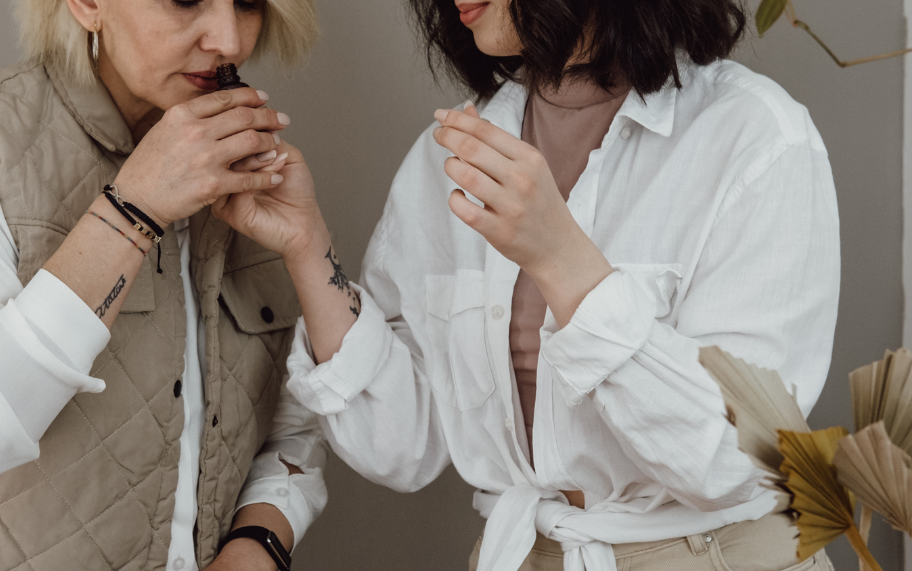Choosing the Right Scent: Essential Oils, Blends, and Fragrance Oils

Scent is a powerful part of any crafted product. It’s what draws people in, evokes emotions, and keeps them coming back for more. Whether you’re working with candles, soaps, bath bombs, or diffusers, choosing the right scent can make all the difference. But with so many options—essential oils, essential oil blends, and fragrance oils—how do you decide which one is the best fit?
Here’s a breakdown of these three types of oils, their strengths, and how to make the most of them in your creations.
Essential Oils: Pure and Simple
Essential oils are made by extracting aromatic compounds directly from plants. They’re as natural as it gets, with nothing extra added. If the bottle says lavender or grapefruit, that’s exactly what’s inside—just the essence of the plant.
Why Use Essential Oils?
- They are completely natural. Essential oils work well for customers who prefer plant-based ingredients.
- They offer aromatherapy benefits. These oils are known for their calming or energizing effects, ideal for wellness-focused products.
What to Watch Out For
- They don’t handle heat well. If your process involves high temperatures, the scent might burn off.
- They can be expensive. Oils like rose or sandalwood come at a higher price due to their rarity.
- They may be flammable. Excess oil in products like candles can pose safety risks.
Best Tip: Essential oils are ideal for low-heat creations like room sprays or bath products. For heat-involved products, such as candles, use lower-temperature waxes like soy or coconut to preserve the scent. Stick to 20 millilitres per pound of material for balance and safety.
Essential Oil Blends: The Balanced Choice
Essential oil blends combine the natural fragrance of essential oils with the practicality of a carrier oil, such as soybean oil. These blends are designed to handle heat better and make crafting easier.
Why Use Essential Oil Blends?
- They perform well under heat. They’re great for crafting candles or other heat-involved items.
- They are cost-effective. Blending reduces the amount of each oil needed, making it more affordable.
- They create layered scents. Manufacturers mix oils to produce complex and unique fragrances.
Are There Downsides?
Not really. Essential oil blends balance quality and affordability while being easier to work with. They’re a versatile and natural option for crafters.
Fragrance Oils: Flexible and Versatile
Fragrance oils are made from a mix of natural and synthetic ingredients, giving you access to scents that don’t exist in nature. Think fresh cookies, tropical cocktails, or even your favourite holiday desserts.
Why Use Fragrance Oils?
- They offer endless variety. You can create almost any scent you imagine.
- They are more affordable. Fragrance oils cost less than essential oils or blends.
- They help reduce harvesting. Synthetic components lower the demand for overharvested plants.
Things to Consider
Fragrance oils aren’t entirely natural, which might not align with every brand. But for variety and creative freedom, they’re a fantastic choice.
How to Choose the Right Scent
The best oil depends on what you’re creating and what you want it to achieve. Here’s a quick guide:
- Want natural ingredients? Essential oils or blends are the way to go.
- Need heat-friendly options? Essential oil blends or fragrance oils work best.
- Looking for unique scents? Fragrance oils let you explore endless possibilities.
- Keeping costs low? Blends and fragrance oils are more budget-friendly than pure essential oils.
It’s not about finding the “perfect” oil—it’s about choosing the one that works for you and your products.
Tips for Success
- Start with small batches. Always test with smaller quantities to see how the scent performs.
- Follow the right ratios. Use 20 millilitres of essential oils or blends and 30 millilitres of fragrance oils per pound of material.
- Prioritize safety. Especially for candles, ensure the product isn’t flammable.
- Experiment with scents. Mixing oils can help you create a signature fragrance.
The right scent transforms a well-made product into something unforgettable. Essential oils offer purity and simplicity, blends bring balance and practicality, and fragrance oils unlock endless creative options. Each has its strengths, and the choice depends on what suits your creations best.
With this guide, you’re ready to explore these oils and craft something truly special. Happy scenting!
Fragrance Oils and Health Products Our fragrance oils are intended for external use in candles, diffusers, and some cosmetic applications. They are not to be ingested, inhaled, or applied directly to skin without proper dilution. Health Canada requires a Natural Product Number (NPN) for the sale of any product making health claims or intended for therapeutic use. It is your responsibility to ensure your final product formulation complies with all applicable regulations and obtains the necessary NPN certification before sale.
Fragrance oils, when incorporated into health products, may require additional safety testing to ensure their suitability and interaction with other ingredients. We strongly recommend conducting independent testing by a qualified laboratory to confirm the safety and efficacy of your final product formulation. By purchasing this product, you agree to assume all responsibility for its proper use and application. We shall not be held liable for any misuse, claims, or damages resulting from the use of this fragrance oil in a health product.





